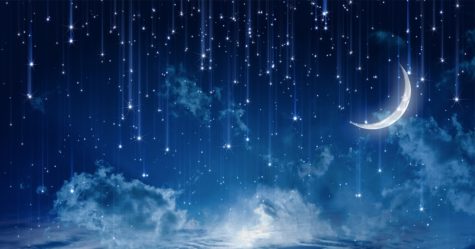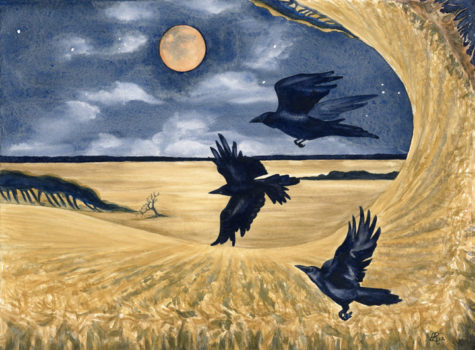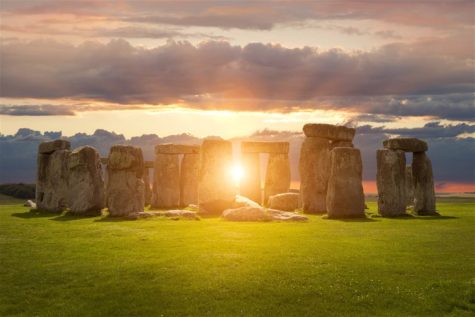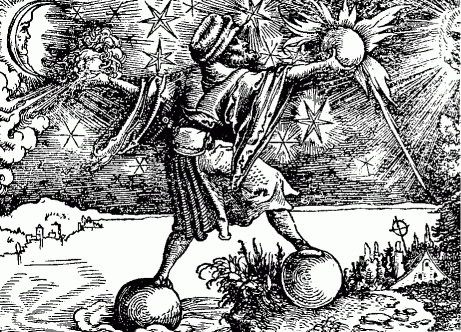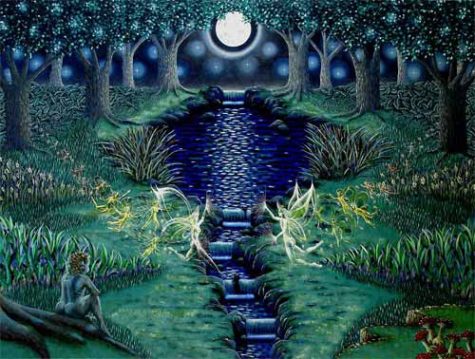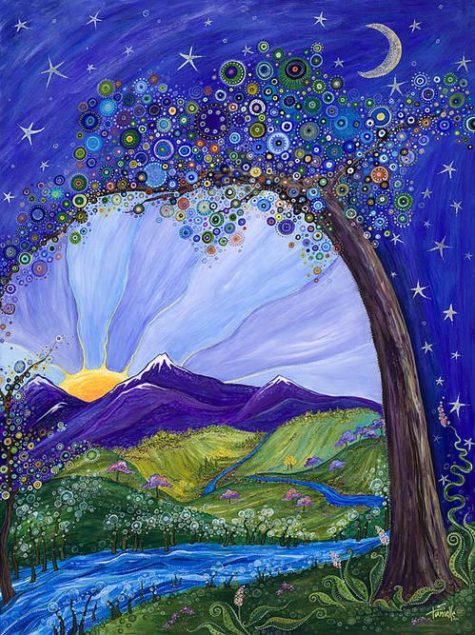Almanac Events
What follows is a list (in alphabetical order) of the names given to the September moon. Also listed is the tradition and/or origin of that moon name:
Acorns Moon ~Wishram
Autumn Moon ~Passamaquoddy
Barley Moon ~Mediaeval English, Algonquin
Black Butterfly Moon ~Cherokee
Black Calf Moon ~Sioux
Blood Moon ~other
Calves Hair Growth Moon ~Dakota
Corn Moon ~Algonquin, Pueblo
Corn Maker Moon ~Abernaki
Deer Paw Moon ~Omaha
Drying Grass Moon ~Arapaho, Cheyenne, Sioux, Algonquin
Freshness Moon ~Mohawk
Fruit Moon ~Algonquin
Harvest Moon ~Neo-Pagan, Colonial American, Algonquin, Hopi
Hay Cutting Moon ~Yuchi
Leaf Fall Moon ~Kiowa
Little Chestnut Moon ~Creek
Maize Moon ~Natchez
Mulberry Moon ~Choctaw
Nut Moon ~Cherokee
Rice Moon ~Anishnaabe
Ripe Moon ~San Juan
Scarlet Plum Moon ~Sioux
Singing Moon ~Celtic
Snow Goose Moon ~Cree
Soaproot ~Pomo
Sturgeon Moon ~other
Yellow Leaf Moon ~Assiniboine, Taos
Wine Moon ~other
Collected from various sources
The phrase “Dog Days” refers to the hottest days of summer. The Old Farmer’s Almanac lists the traditional timing of the Dog Days: the 40 days beginning July 3 and ending August 11, coinciding with the heliacal (at sunrise) rising of the Dog Star, Sirius.
The rising of Sirius does not actually affect the weather (some of our hottest and most humid days occur after August 11), but for the ancient Egyptians, Sirius appeared just before the season of the Nile’s flooding so they used the star as a “watchdog” for that event. Since its rising also coincided with a time of extreme heat, the connection with hot, sultry weather was made for all time.
More about the Dog Days can be found here: Dog Days of Summer
Source: Almanac.com
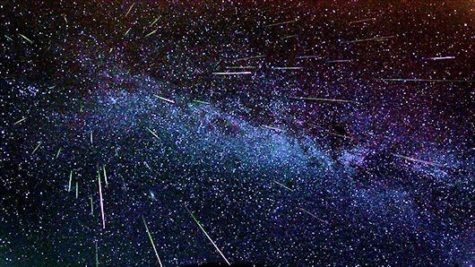
What is a meteor shower?
A meteor shower is a spike in the number of meteors or “shooting stars” that streak through the night sky.
Most meteor showers are spawned by comets. As a comet orbits the Sun it sheds an icy, dusty debris stream along its orbit. If Earth travels through this stream, we will see a meteor shower. Although the meteors can appear anywhere in the sky, if you trace their paths, the meteors in each shower appear to “rain” into the sky from the same region.
Meteor showers are named for the constellation that coincides with this region in the sky, a spot known as the radiant. For instance, the radiant for the Leonid meteor shower is in the constellation Leo. The Perseid meteor shower is so named because meteors appear to fall from a point in the constellation Perseus.
Visit our Almanac Page to find out which meteor showers may be visible each month and when they will be at their best, or follow this tag Meteor Shower, to see posts on all the meteor showers visible from earth.
What are shooting stars?
“Shooting stars” and “falling stars” are both names that describe meteors — streaks of light across the night sky caused by small bits of interplanetary rock and debris called meteoroids vaporizing high in Earth’s upper atmosphere. Traveling at tens of thousands of miles an hour, meteoroids quickly ignite from the searing friction with the atmosphere, 30 to 80 miles above the ground. Almost all are destroyed in this process; the rare few that survive and hit the ground are known as meteorites.
When a meteor appears, it seems to “shoot” quickly across the sky, and its small size and intense brightness might make you think it is a star. If you’re lucky enough to spot a meteorite (a meteor that makes it all the way to the ground), and see where it hits, it’s easy to think you just saw a star “fall.”
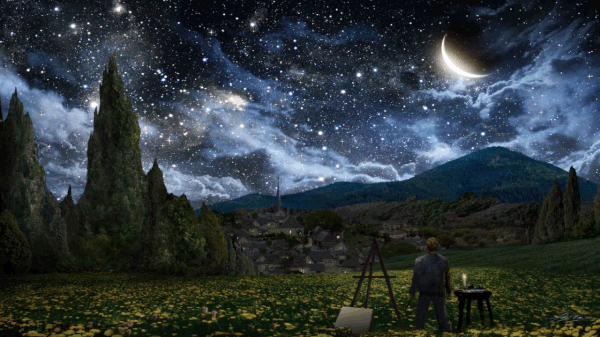
How can I best view a meteor shower?
Get away from the glow of city lights and toward the constellation from which the meteors will appear to radiate.
For example, drive north to view the Leonids. Driving south may lead you to darker skies, but the glow will dominate the northern horizon, where Leo rises. Perseid meteors will appear to “rain” into the atmosphere from the constellation Perseus, which rises in the northeast around 11 p.m. in mid-August.
After you’ve escaped the city glow, find a dark, secluded spot where oncoming car headlights will not periodically ruin your sensitive night vision. Look for state or city parks or other safe, dark sites.
Once you have settled at your observing spot, lie back or position yourself so the horizon appears at the edge of your peripheral vision, with the stars and sky filling your field of view. Meteors will instantly grab your attention as they streak by.
How do I know the sky is dark enough to see meteors?
If you can see each star of the Little Dipper, your eyes have “dark adapted,” and your chosen site is probably dark enough. Under these conditions, you will see plenty of meteors.
What should I pack for meteor watching?
Treat meteor watching like you would the 4th of July fireworks. Pack comfortable chairs, bug spray, food and drinks, blankets, plus a red-filtered flashlight for reading maps and charts without ruining your night vision. Binoculars are not necessary. Your eyes will do just fine.
Info from: Stardate and Universe Today
In August, we celebrate the beginning of the Corn Moon. This moon phase is also known as the Barley Moon, and carries on the associations of grain and rebirth that we saw back at Lammastide. August was originally known as Sextilis by the ancient Romans, but was later renamed for Augustus (Octavian) Caesar. Some Native American tribes knew that the sturgeon of the Great Lakes and Lake Champlain were most readily caught during this full Moon, for them it was the Full Sturgeon Moon. Others called it the Green Corn Moon or the Grain Moon.
Correspondences:
- Element: Fire
- Colors: Yellow, red, orange, gold
- Gemstones: Tigers eye, carnelian, garnet, red agate, fire agate, jasper,
- Trees: Cedarm alder, hazel
- Gods: Vulcan, Mars, Nemesis, Hecate, Hathor, Thoth, Ganesha, Diana
- Nature Spirits: dryads
- Herbs: Rosemary, basil, rue, chamomile, St Johns wort, bay, angelica, fennel, rue, orange
- Flowers: Sunflower, marigold
- Scents: Frankincense, heliotrope
- Animals: lion, phoenix, sphinx and the dragon
- Birds: crane, falcon, eagle
As the summer begins winding down, we’ve made it through the first harvest of Lammas/Lughnasadh, and now it’s time to think about bringing in the next phase of crops. Grain is ready to be threshed and baked into bread. If you have a garden, pick your herbs and veggies, so you can preserve or dry them before the cooler days set in. Gather your herbs and hang them in a dark place to dry, so you can use them all winter, either for magical needs or culinary ones.
Energies should be put into harvesting, gathering vitality and health, also friendships. Harness some of the Corn Moon’s fiery energy for your ritual and spell work. This is a good time to focus on your spiritual and physical health. It’s the time to harvest what you can now to put aside for later use. What sacrifices can you make today that will benefit you further down the road?
Collected from various sources including: PaganWiccan
“Solstice” is derived from two Latin words: “sol” meaning sun, and “sistere,” to cause to stand still. This is because, as the summer solstice approaches, the noonday sun rises higher and higher in the sky on each successive day. On the day of the solstice, it rises an imperceptible amount, compared to the day before. In this sense, it “stands still.”
(In the southern hemisphere, the summer solstice is celebrated in December, also when the night time is at a minimum and the daytime is at a maximum.)
Why does the summer solstice happen?
On this day, typically June 21, the daytime hours are at a maximum in the Northern hemisphere, and night time is at a minimum. It is officially the first day of summer. It is also referred to as Midsummer because it is roughly the middle of the growing season throughout much of Europe.
The seasons of the year are caused by the 23.5° tilt of the earth’s axis. Because the earth is rotating like a top or gyroscope, the North Pole points in a fixed direction continuously — towards a point in space near the North Star. But the earth is also revolving around the sun. During half of the year, the southern hemisphere is more exposed to the sun than is the northern hemisphere. During the rest of the year, the reverse is true.
At noontime in the Northern Hemisphere the sun appears high in the sky during summertime, and low during winter. The time of the year when the sun reaches its maximum elevation occurs on the summer solstice — the day with the greatest number of daylight hours. It typically occurs on, or within a day or two of, June 21, the first day of summer. The lowest elevation occurs about Dec 21 and is the winter solstice — the first day of winter, when the night time hours reach their maximum.
Activities for the Summer Solstice:
- Rise early on the summer solstice and greet the sun as it begins to brighten the sky.
- Create protective amulets out of rue, rowan and basil. Place these herbs in a clean white or gold cloth, and tie the cloth securely.
- Make a protective charm for your home or business. Tie a few cinnamon sticks together and position them over the door of your home or office.
- Consume foods that honor the power of the sun. Include foods that are yellow and orange. Lemons are particularly good for this purpose and can be consumed in desserts as well as in tea or lemonade.
- Leave some food out for the fairy folk that are active at midsummer. Good choices include milk, wine, honey, water and fresh bread.
Information collected from various sources
Good weather in “Flaming June” is necessary if there is to be a good harvest. Country weather lore states:
- If June with bright sun is blessed, for harvest, we will thank the Goddess.
- If June be sunny, harvest comes early.
- A cold and wet June ruins the rest of the year.
- It is said that if it rains on 27 June, then it will rain for the next seven weeks.
- A wet June makes a dry September.
- A dripping June brings all things in tune.
- If swallows fly near the ground in June, it is a sign of coming rain.
- Bats flying on a June evening are a sign of hot, dry weather the next day.
- A calm June puts the farmer in tune.
- June damp and warm, does the farmer no harm.
- Rain on St Vitus’ Day (June 15), brings rain for 30 days in a row.
According to country lore, it was also claimed that summer doesn’t actually begin until the elder is in flower.
Information collected from: various sources
The May full moon is also known as the Flower Moon, Milk Moon, Corn Planting Moon, and Corn Moon. The energies around this moon are ones of health, romance, love and wisdom. We are encouraged to begin to take action on the things we’ve recently been planning.
Once April’s rains and winds have subsided, the sun begins to warm up the earth and we’re able to get the gardens planted. Thus May is the month we begin to sow our crops. Get out in the garden under a Flower Moon and put your hands into the soil. May’s Moon brings us energy of love, wisdom and health. Spring is a time of fertility, and May is a fiery month indeed — full of lust and passion! It’s called the month of the Hare’s Moon — and we all know what hares are busy doing in the spring.
Correspondences:
- Colors: Red, orange, yellow
- Gemstones: Ruby, garnet, amber, Apache tear
- Trees: Hawthorn, rowan
- Gods: Kali, Priapus, Cernunnos, Flora
- Herbs: Cinnamon, members of the mint family
- Element: Fire
Gems and oils to boost the energy of the Hare’s Moon
- Gemstones: Malachite, Jade, Emerald, Peridot or any other green-hued stones.
These gems help enhance the energy of the heart chakra, which governs our compassion, generosity, love and harmony. If you need a boost in any of these areas, simply slip a green stone into your pocket, or put on a piece of green-gemmed jewelry.
- Essential Oils: Eucalyptus, Thyme, Sandalwood, Pine, Melissa, Bergamont.
These oils will help you connect with your unconscious mind and set the intention of love, wisdom and compassion
Celebrating The May Full Moon
The May full moon is a time when we begin to really notice more light in our lives. The days are longer, the grass is green and the flowers are starting to bloom. The energy at this time is playful and light, energetic and buoyant. If you want to really celebrate this moon and the energy it brings, you can do fun things like:
- host a pot-luck with a spring theme
- visit your local elementary school and volunteer during art class
- light a green candle and meditate on your thankfulness for the feeling of renewal and rejuvenation.
Other ideas:
Another great way to connect with the Hare’s Moon is to bless some seeds, seedlings or garden plants, and then plant them. Doing this involves intentionally adding positive energy to these plants, and then nurturing their growth and health. This is a powerful symbolic exercise that will help you focus your energy on intentionally giving “good vibes” to your environment. Doing this will make you feel empowered, positive and loving.
This is also a good time to work on magic related to careers and jobs. Thinking about switching to a new position, or perhaps trying a new field altogether? Want to take a class or get your degree? Take the seeds you’ve planted last month, and allow them to bloom and grow in your favor. Do some fire divination this month to help guide you on your way.
source: PaganWiccan
Notes: I am assuming that this counting of the days begins and ends with the new moon. Notice that there are 29 days listed even though it only takes the moon 27.3 days to orbit the earth. I also found the juxtaposition of the Major Arcana of the Tarot with Old Testament happenings, and the Goddess Hecate (see day 27), an interesting mix.
1. The Juggler, or Magus— The first day of the moon is that of the creation of the moon itself. This day is consecrated to mental enterprises, and should be favorable for opportune innovations.
2. Pope Joan, or Occult Science — This day is propitious to revelations, initiations, and great discoveries of science.
3. The Celestial Mother, or Empress— The third day was that of man’s creation. So is the moon called the MOTHER in Kabbalah, when it is represented in association with the number three. This day is favorable to generation, and generally to all productions, whether of body or mind.
4. The Emperor, or Ruler— The fourth day is baleful; it was that of the birth of Cain; but it is favorable to unjust and tyrannical enterprises.
5. The Pope, or Hierophant— The fifth day is fortunate; it was that of the birth of Abel.
6. The Lover, or Liberty— The sixth is a day of pride; it was that of the birth of Lamech, who said unto his wives; “I have slain a man to my wounding, and a young man to my hurt. If Cain shall be avenged sevenfold, truly Lamech seventy and sevenfold.” This day is propitious for conspiracies and rebellions.
7. The Chariot— On the seventh day, birth of Hebron, who gave his name to the first of the seven sacred cities of Israel. A day of religion, prayers and success.
8. Justice— Murder of Abel. Day of expiation.
9. The Old Man, or Hermit— Birth of Methucelah. Day of blessing for children.
10. Ezekiel’s Wheel of Fortune— Birth of Nebuchadnezzar. Reign of the Beast. Fatal day.
11. Strength— Birth of Noah. Visions on this day are deceitful, but it is one of health and long life for children born on it.
12. The Victim, or Hanged Man— Birth of Samuel, Prophetic and kabbalistic day, favorable to the fulfilment of the great work.
13. Death— Birthday of Canaan. the accursed son of Cham. Baleful day and fatal number.
14. The Angel of Temperance— Blessing of Noah on the fourteenth day of the moon. This day is governed by the angel Cassiel of the hierarchy of Uriel.
15. Typhon, or the Devil— Birth of Ishmael. Day of reprobation and exile.
16. The Blasted Tower— Birthday of Jacob and Esau; the day also of Jacob’s predestination, to Esau’s ruin.
17. The Glittering Star— Fire from heaven burns Sodom and Gomorrah. Day of salvation for the good, and ruin for the wicked; on a Saturday dangerous. It is under the dominion of the Scorpion.
18. The Moon— Birth of Isaac. Wife’s triumph. Day of conjugal affection and good hope.
19. The Sun— Birth of Pharaoh. A beneficent or fatal day for the great of earth, according to the different merits of the great.
20. The Judgment— Birth of Jesus, the instrument of God’s judgment. Propitious for divine revelations.
21. The World— Birth of Saul, material royalty. Danger to mind and reason.
22. Influence of Saturn— Birth of Job. Day of trial and suffering.
23. Influence of Venus— Birth of Benjamin. Day of Preference and tenderness.
24. Influence of Jupiter— Birth of Japhet.
25. Influence of Mercury— Tenth plague of Egypt.
26. Influence of Mars— Deliverance of the Israelites, and passage of the Red Sea.
27. Influence of Diana, or Hecate— Splendid victory achieved by Judas Maccabeus.
28. Influence of the Sun— Samson carries off the gates of Gaza. Day of strength and deliverance.
29. The Fool of the Tarot— Day of failure and miscarriage in all things.
Found in:
Encyclopaedia of Superstitions, Folklore, and the Occult Sciences of the World
In April, the thunderstorms of March are beginning to subside, and the wind picks up. Seeds are being blown about on the breezes, spreading life all around from one place to the next. In fact, this month’s full moon is the aptly named Wind Moon, although in some traditions this lunar cycle is often known as the Seed Moon.
Trees have buds on them, spring daffodils and tulips abound, and the birds are nesting once more. Spring is well underway now that the soggy chill of March is past, and while it’s still soggy in a lot of places, there’s hope yet, because as the saying goes, those April showers will bring us flowers in May.
Now that April’s here, It’s a time to welcome new beginnings, and do magic related to conceiving new ideas and projects. Much like March, this is a time of conception and fertility and new growth. What do you want to see taking root and growing in your life?
Correspondences:
- Colors: Bright primary colors — red, yellow, blue — and their combinations
- Gemstones: Quartz, selenite, angelite
- Trees: Hazel, forsythia, lilac, willow
- Gods: Ishtar, Tawaret, Venus, Herne, Cernunnos
- Herbs: Dandelion, milkweed, dogwood, fennel, dill
- Element: Air
It’s the time to stop planning, and start doing. Take all those ideas you’ve had brewing for the past couple of months, and make them come to fruition. This is an excellent time to work on magic related to new beginnings. Looking to bring new love into your life, or conceive or adopt a child? This is the time to do those workings.
source:Paganwiccan
People have been planting by the moon’s phases for centuries, in the belief that something in the lunar light or gravity affects the way plants grow.
The Simplest Rule For Moon Planting is as follows:
The moon planting rule says to plant crops that produce above the ground during the increasing light of the moon (from new moon to full moon) and to plant crops that produce below the ground during the decreasing light of the moon (from full moon to new moon).
A More Detailed Set of Moon Planting Rules:
- New Moon To Full Moon: Sow, Transplant, bud and graft.
- Full Moon To New Moon: Plow, Cultivate, weed and reap.
- New Moon To First Quarter: Good for Planting above-ground crops with outside seeds,
- flowering annuals.
- First Quarter To Full Moon: Good for planting above ground crops with inside seeds.
- Full Moon To Last Quarter: Good for planting root crops, bulbs, biennials, and perennials.
- Last Quarter To New Moon: Do Not Plant


